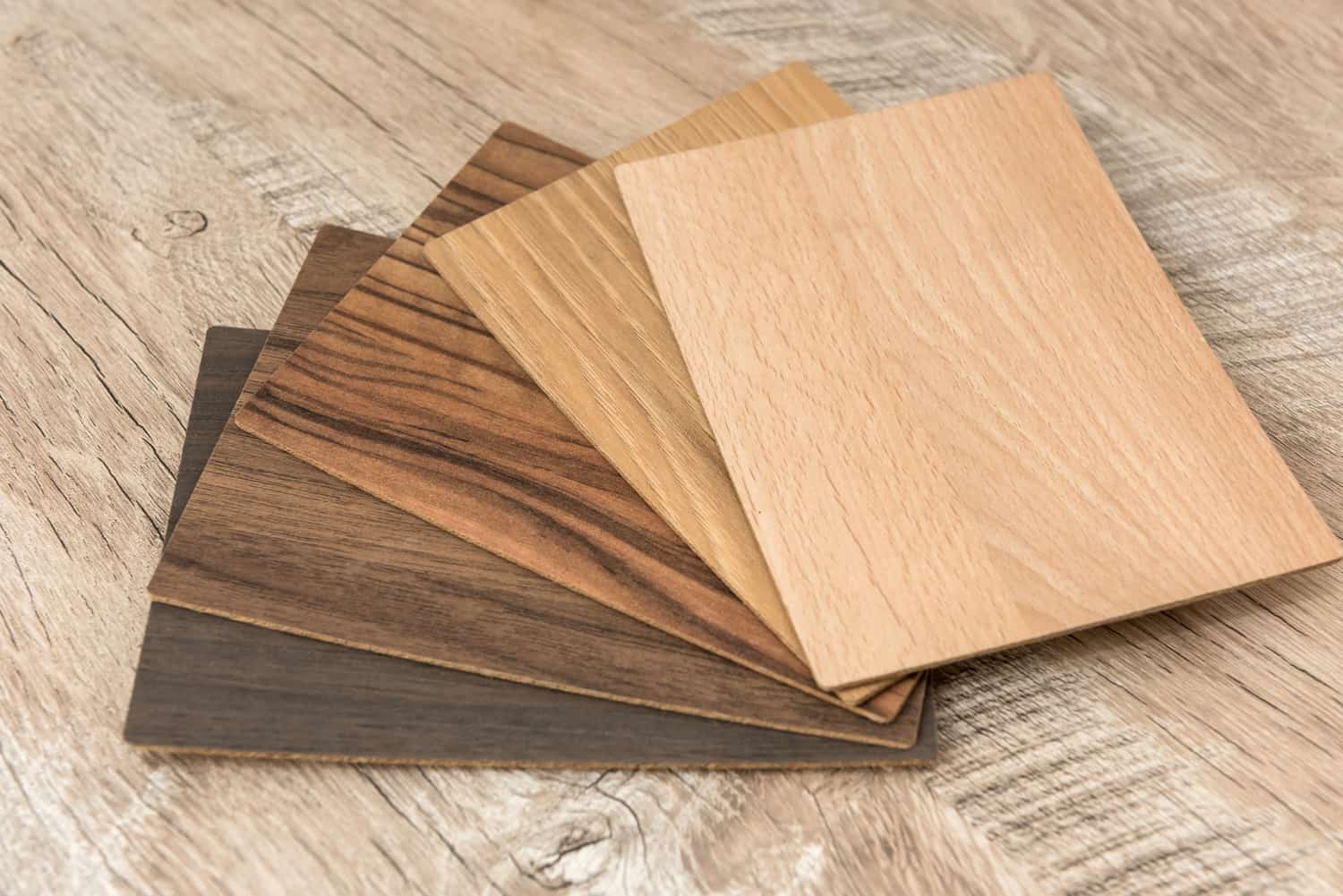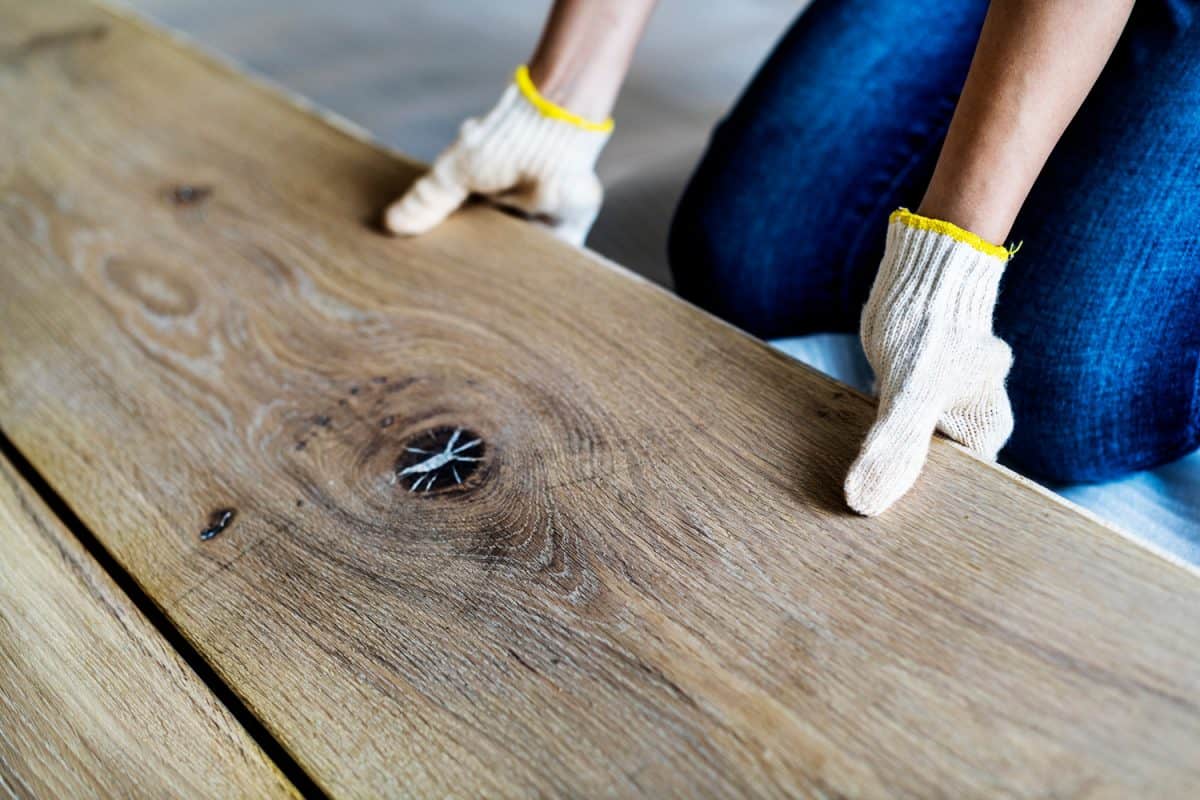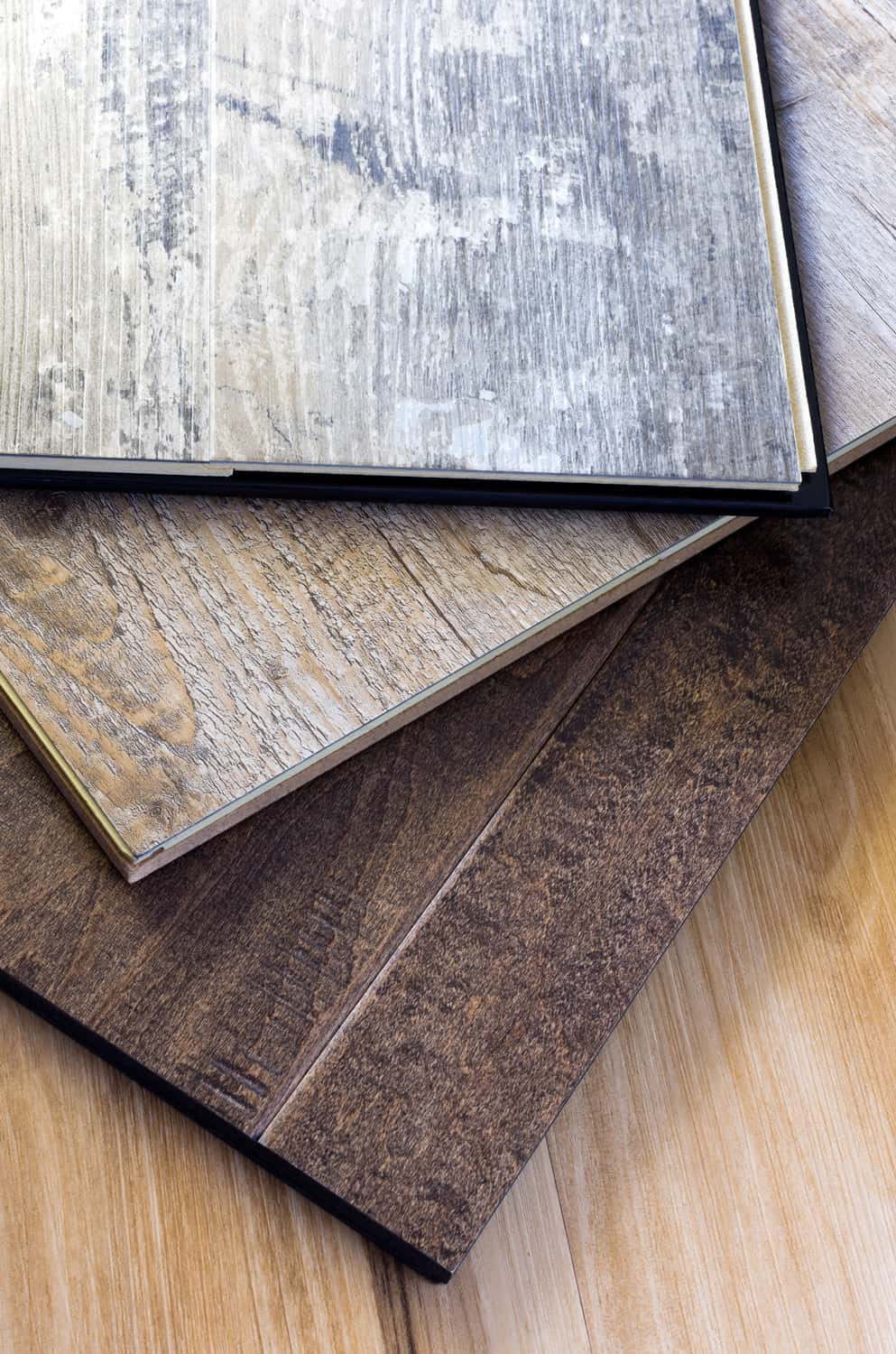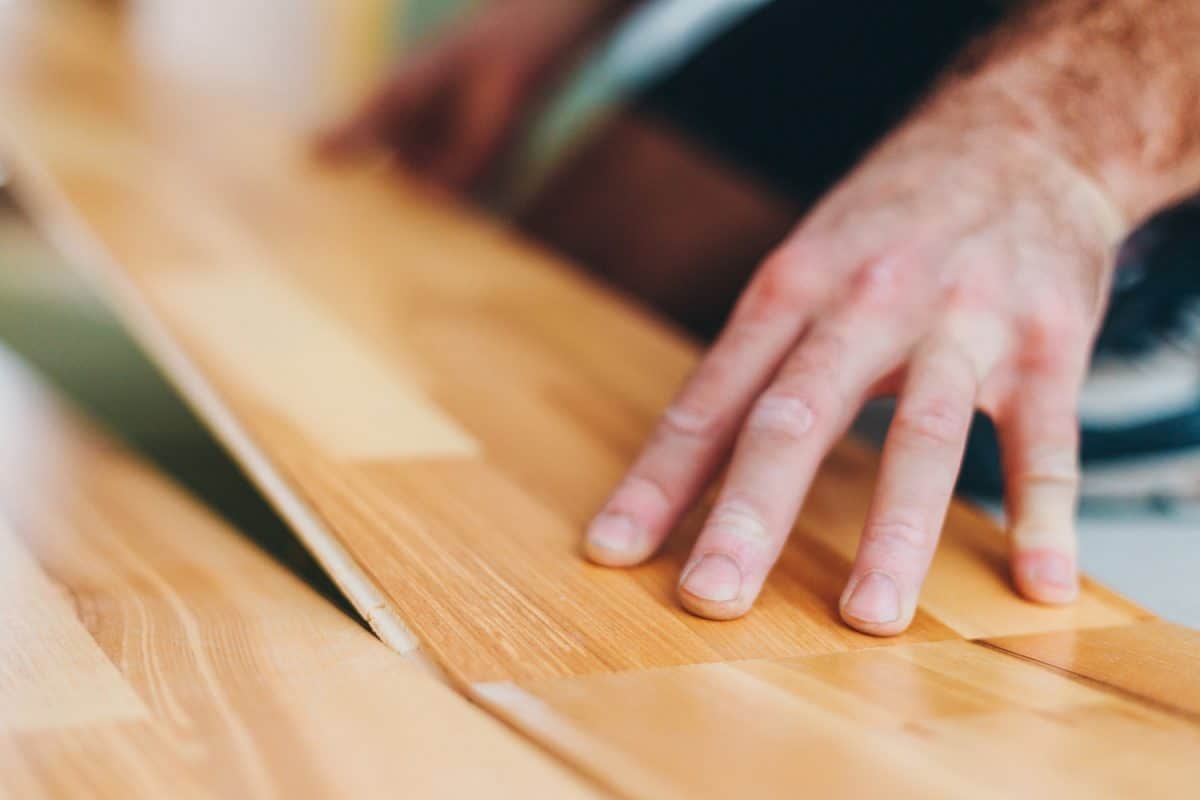Wood is considered one of the best flooring material options because of its longevity and low need for maintenance. However, there are many different types of wood flooring available on the market. But, to determine the perfect product for your home, it is crucial to know the thickness of each option. So, if you wonder how thick wood flooring is, let's go over the details!
Flooring thickness is one aspect to consider when deciding on wood. The thickness can benefit you in several ways. With thicker flooring, you get reduced sound migration, better insulating properties, and better bridging of subfloor imperfections. Here are some of the thicknesses of wood flooring options:
- Laminate floor - 6 to 12 millimeters
- Engineered wood floor - 3 to 7 millimeters, also available in 15 millimeters
- Solid wood flooring - 15.88 to 22.23 millimeters
- Parquet wood flooring - 19 to 21 millimeters
- Bamboo flooring - 13 to 16 millimeters
- Cork flooring - 4 to 12 millimeters
Now you know the available thickness of each of the most common wood flooring. However, which wood floor thickness is considered the best? Additionally, you might want to learn more about the old wood flooring you have. If you'd like to learn this and more, keep reading ahead.
![Laminate background. Samples of laminate or parquet with a pattern and wood texture for flooring and interior design, How Thick Is Wood Flooring? [Including Natural Hardwood and Engineered Wood]](https://uooz.com/wp-content/uploads/2021/11/How-Thick-Is-Wood-Flooring-Including-Natural-Hardwood-and-Engineered-Wood.png)
What Thickness of Wood Flooring Is Best?

When it comes to hardwood flooring, there are three different types of boards available in the market. For instance, common board thicknesses include:
- 5/8-inch (15.88 millimeters)
- 3/4-inch (19 millimeters)
- 7/8-inch (22.23 millimeters)
Even though the best thickness of the wood flooring varies from project to project, 3/4-inch (19 millimeters) is the more favorable option.
How Thick Is Real Hardwood Flooring?

When it comes to natural hardwood flooring, all of the different types of wood flooring you'll see are of the same thickness. The standard and most common thickness of natural wood flooring is 3/4-inch. Some can get as thin as 5/16-inch.
If you've questioned why thickness matters when choosing flooring, it matters most when you're installing it over subfloors with questionable integrity.
Is a Thicker Hardwood Floor Better?
When talking about solid hardwood floors, many people assume that thicker hardwood floors are better. But are they good? Yes, they are.
According to professionals, thicker hardwood floors are more durable than their thinner counterparts. Not only will a thicker hardwood floor last longer, but it is also suitable for refurbishing and renovating.
When buying a solid hardwood floor, the only thing you should keep in mind is that the thicker the plank is, the higher the cost. So, if you are on a tight budget, then opt for something thinner.
How Thick Should the Subfloor Be for Hardwood Floors?
Now you know how thick a hardwood flooring should be. But what about the subfloor for hardwood flooring? Well, in terms of subfloor, 3/4-inch is considered the best thickness.
Moreover, plywood and OSB are the most commonly used material for subfloors. On the other hand, clipboards and particle boards are uncommon for hardwood subflooring. But you can use these materials with the same thickness (3/4-inch) for engineered wood floor subflooring.
How Thick Are Old Wood Floors?
Nowadays, the average solid wood floor thickness is 3/4-inch, but it was not always the same. Older houses often have even thicker flooring than modern builds. For pre-1850 homes, hardwood floors can be as comprehensive as 11/8-inch thick.
What Is the Average Thickness of Engineered Wood Flooring?

When you're considering choosing engineered wood flooring, the thicknesses will vary. But, one aspect that might have you confused is how it's measured. Engineered wood flooring is slightly different than solid hardwood. You'll likely find that you also have to consider the thickness of the veneer of this flooring option.
However, the more important factor would be the backing of it. As some suggest, engineered wood flooring is usually around 3/8-inch or 1/2-inch thick. But, an overall thickness of 3/4-inch or 5/8-inch is recommendable.
Is Thicker Engineered Wood Better?
When it comes to engineered wood or wood flooring, there is a common misconception that thicker means better. However, this is not the case. Every project requires a different thickness of engineered wood.
Thick wood flooring is better at impact resistance. However, thinner engineered wood flooring transfers heat better than solid wood flooring or thicker engineered wood flooring.
Is 14 mm Engineered Flooring Suitable?
Yes, 14-millimeter engineered flooring is a good option for people looking for an economical flooring option. A 14-millimeter engineered flooring is suitable for moderate foot traffic areas. Even though it is cheap, engineered wood still looks premium and is durable.
Is It Better To Glue or Float an Engineered Wood Floor?
Do you love the pricing of engineered wood floors but are unsure if you should go for glue or float? In general, the engineered wood flooring floating option is the best and most popular.
It is because due to no glue usage, an engineered wood floating floor is easy to install. It is also quicker as you would not have to give the glue time to dry.
On the other hand, if you are getting hardwood flooring, it is better to use glue instead of the float method for a more secure installation.
Why Do Engineered Wood Floors Squeak?
One of the most common problems people face with engineered wood flooring is the squeaky noise. So, why does engineered wood floor squeak, and is it because of the thickness of the wood flooring?
In most cases, the thickness of the engineered wood flooring has nothing to do with the squeaky noise. The noise comes from:
- Poorly nailed subfloor sheathing
- Missing nails or nails that miss the joist
- Improperly installed subfloor sheathing
- Missing joist hangers
Some other causes can be the excessive shrinkage of subfloor and improper application of subfloor adhesive.
Do Engineered Wood Floors Scratch Easily?
Whether the engineered wood floor is scratch-prone or not depends on the finishing. However, neither engineered wood floor nor absolute wood is scratch-prone. Because of their scratch resistance, engineered wood flooring is considered a suitable option for areas with moderate to high foot traffic.
As some suggest, the surface of engineered wood flooring is the same as that of solid hardwood flooring. So, it's reasonable to assume that it has the same amount of resistance to scratches. But, they can have additional protection in the form of finishing. Both solid and engineered wood flooring can be treated with oil or lacquer.
Though, if you need more scratch resistance, lacquer is the better option. Since it sits on the surface of the wood, it leaves little room for the wood flooring to get any scratches.
However, it comes at the cost of leaving the inner layer of the wood unprotected. So, if the lacquer layer wears away without notice, they're more susceptible to damage.
How Thick Is a Floating Wood Floor?

Floating wood flooring is a popular wood flooring option. Unlike the general glued or nailed methods, the wood flooring is not fixed on the floor. Instead, it consists of interconnected tongue and groove planks placed on the wood subfloor or concrete.
So, how thick is wood flooring? There are multiple options available, but usually, the thickness of floating wood floors is between 1-millimeter, approximately 1/32-inch to 6 millimeters, approximately 1/4-inch thick.
Is 12 mm Laminate Better Than 8mm?
As even a few millimeters can make a massive difference in the cost of laminate flooring, 12-millimeter laminate is slightly more expensive than an 8-millimeter one. But should you go for the cost-effective option over the expensive one?
Yes, a 12-millimeter laminate is better than an 8-millimeter laminate in many ways. For starters, thicker wood flooring offers better insulation. Moreover, the 12-millimeter wood flooring is quieter than its 8-millimeter counterpart due to the higher density.
Not only that, but a 12-millimeter laminate also features better impact resistance. In other words, even if you accidentally drop a sharp object on the wood floor, it will have less impact. Last but not least, a 12-millimeter thick laminate allows detailed designs and embossing for a better, unique wood flooring look.
Is 8 mm Laminate Too Thin?
No, even though 12-millimeter is a great flooring option, 8-millimeter is not considered thin. Laminate comes as thin as 6-millimeter. Eight-millimeter laminate, on the other hand, is one of the most popular laminate options. It is a happy medium laminate that can create a sleek flooring look and overcome any subfloor imperfections.
Final Takeaway
![Laminate background. Samples of laminate or parquet with a pattern and wood texture for flooring and interior design, How Thick Is Wood Flooring? [Including Natural Hardwood and Engineered Wood]](https://uooz.com/wp-content/uploads/2021/11/Laminate-background.-Samples-of-laminate-or-parquet-with-a-pattern-and-wood-texture-for-flooring-and-interior-design-1200x800.jpg)
When you're looking to install new flooring, there are a lot of aspects to consider. As we can see with wood flooring, there are many thicknesses available. Whether you go for the thicker choices or not is up to what you need. We hope you found the information above helpful.
Before you go, do you have other home renovation concerns? Are you planning on getting vinyl siding? If you're wondering how thick they should be, check out our post "How Thick Should Vinyl Siding Be?"
Are you planning to use underlayment paper with hardwood flooring? If you've played around with the idea of using roofing paper as a substitute, check out our post to find out if that's a good idea "Can You Use Roofing Paper Under Hardwood Flooring?"
Until next time!
